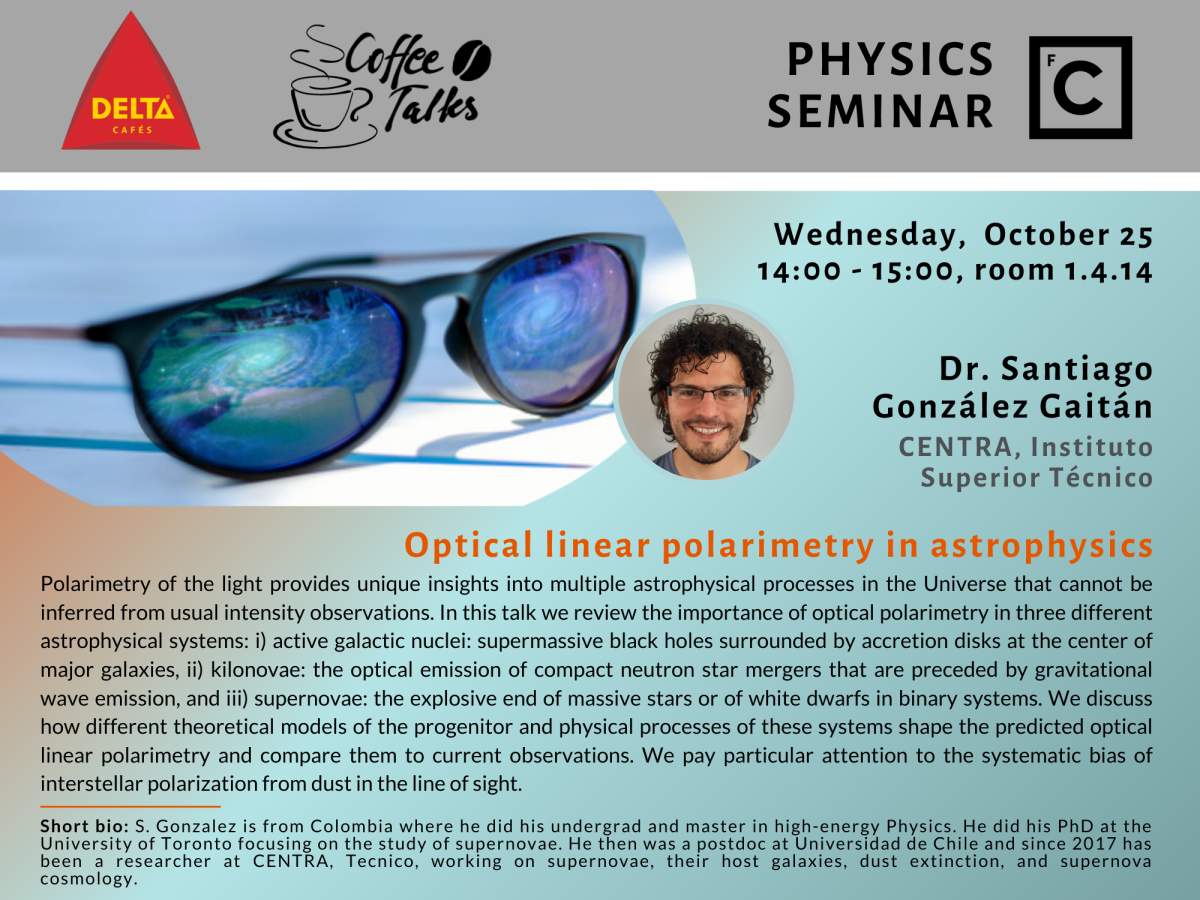Por Santiago González Gaitán (CENTRA - Instituto Superior Técnico).
Polarimetry of the light provides unique insights into multiple astrophysical processes in the Universe that cannot be inferred from usual intensity observations. In this talk we review the importance of optical polarimetry in three different astrophysical systems: i) active galactic nuclei: supermassive black holes surrounded by accretion disks at the center of major galaxies, ii) kilonovae: the optical emission of compact neutron star mergers that are preceded by gravitational wave emission, and iii) supernovae: the explosive end of massive stars or of white dwarfs in binary systems. We discuss how different theoretical models of the progenitor and physical processes of these systems shape the predicted optical linear polarimetry and compare them to current observations. We pay particular attention to the systematic bias of interstellar polarization from dust in the line of sight.
Short bio: S. Gonzalez is from Colombia where he did his undergrad and master in high-energy Physics. He did his PhD at the University of Toronto focusing on the study of supernovae. He then was a postdoc at Universidad de Chile and since 2017 has been a researcher at CENTRA, Tecnico, working on supernovae, their host galaxies, dust extinction, and supernova cosmology.



















